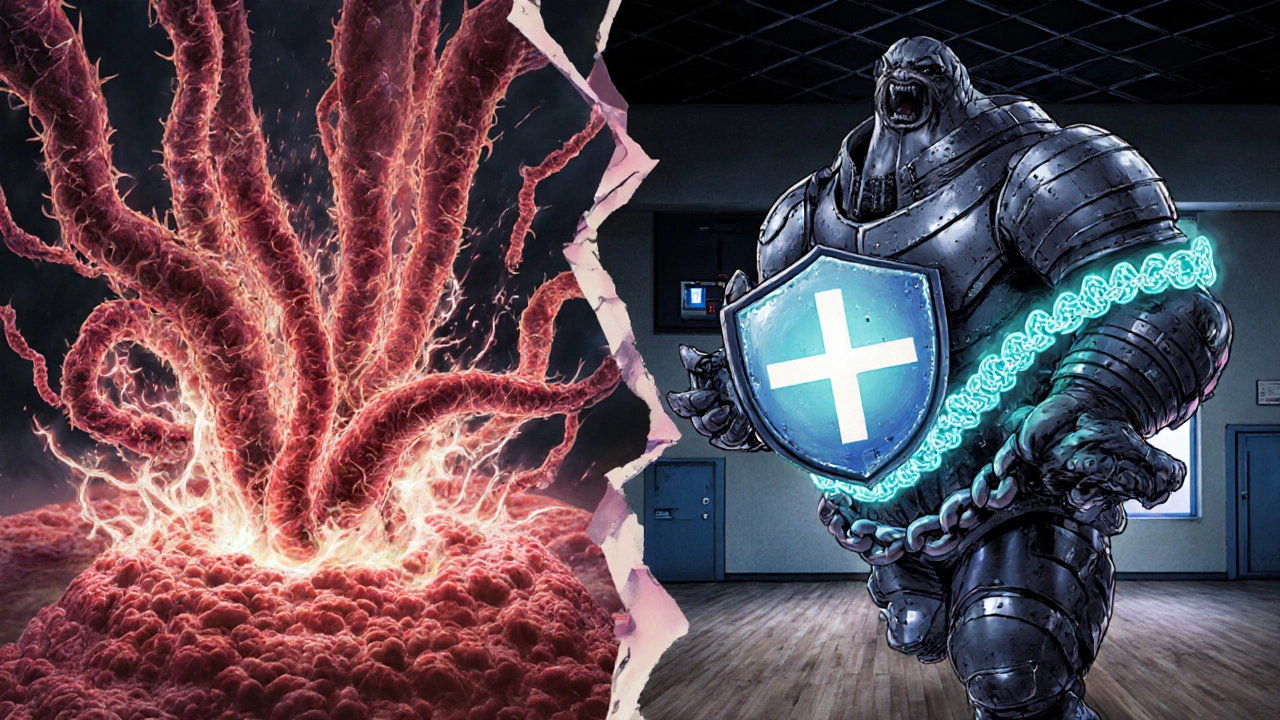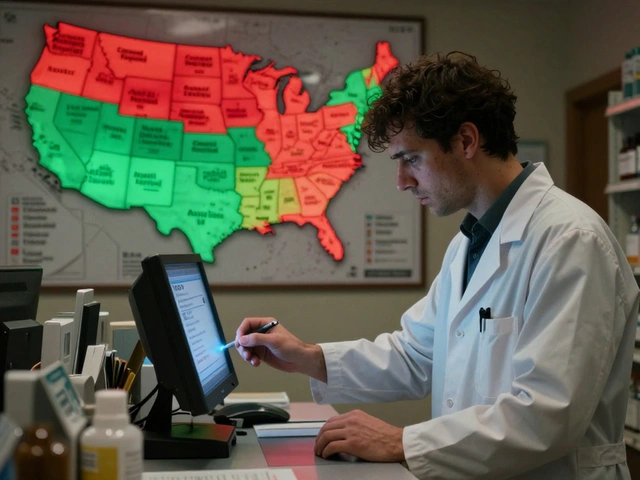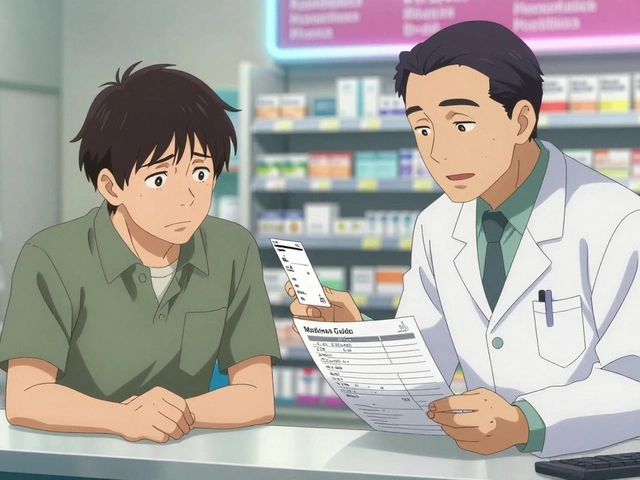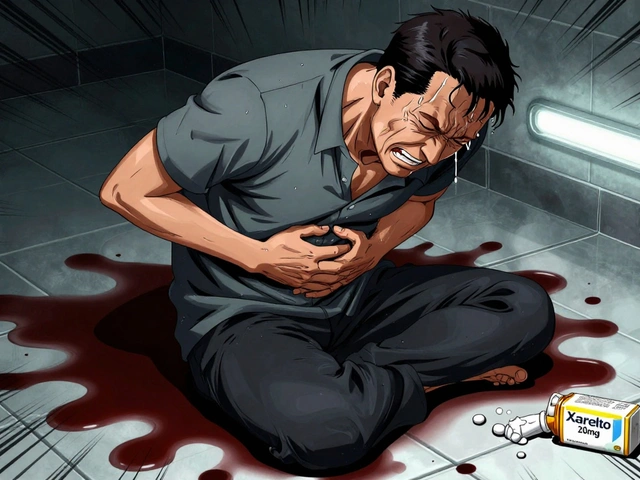
MRSA isn’t just one bug. It’s two very different ones wearing the same name. You’ve probably heard of it as a dangerous antibiotic-resistant infection, but what most people don’t realize is that the MRSA you catch at the gym is not the same as the MRSA you pick up in a hospital. And treating them the same way can make things worse.
What Exactly Is MRSA?
MRSA stands for methicillin-resistant Staphylococcus aureus. That’s a mouthful, but it just means a type of staph bacteria that won’t die when you hit it with common antibiotics like penicillin, amoxicillin, or methicillin. Staph bacteria live on our skin and in our noses without causing harm-most of the time. But when they get into a cut, scrape, or surgical wound, they can turn into something dangerous. And when they’re resistant to antibiotics, they become harder to treat.
For decades, MRSA was mostly a hospital problem. Patients with weakened immune systems, catheters, or recent surgeries were at risk. But in the late 1990s, something changed. Healthy people-kids, athletes, military recruits-started getting serious staph infections with no hospital contact. These were new strains, and they were spreading fast outside of medical settings.
Community MRSA vs. Hospital MRSA: The Genetic Divide
Here’s where it gets interesting. The two types of MRSA aren’t just different in where they’re found-they’re genetically different.
Community MRSA (CA-MRSA) usually carries a small piece of DNA called SCCmec type IV or V. This tiny genetic package doesn’t carry many resistance genes, so these strains are often only resistant to one class of antibiotics. But they make up for it with something else: powerful toxins. Many CA-MRSA strains produce Panton-Valentine leukocidin (PVL), a toxin that destroys white blood cells. That’s why CA-MRSA often causes nasty skin abscesses, boils, or even life-threatening pneumonia in otherwise healthy people.
Hospital MRSA (HA-MRSA), on the other hand, carries larger SCCmec types (I-III). These are like genetic Swiss Army knives-packed with resistance genes. HA-MRSA can resist not just penicillin, but also erythromycin, clindamycin, and fluoroquinolones. That’s why hospital infections are so hard to treat. But here’s the twist: HA-MRSA doesn’t usually make the same powerful toxins as CA-MRSA. It’s more of a slow-burn threat, taking hold in people already weakened by illness or surgery.
In the U.S., one strain-USA300-dominates the community. It accounts for about 70% of all CA-MRSA cases. It’s aggressive, spreads easily, and shows up in locker rooms, prisons, and homes. Meanwhile, HA-MRSA strains like ST239 and ST59 are more common in hospitals, especially in places with heavy antibiotic use.
Where Do You Catch Each Type?
You don’t get CA-MRSA from a hospital IV. You get it from skin-to-skin contact.
Think: wrestling matches, shared towels, crowded dorms, or gyms with dirty equipment. Military barracks have 12 times the risk. Homeless shelters? 9 times higher. Prisons? Nearly 15 times higher. Injecting drug users are a major source too-dirty needles, poor hygiene, and shared equipment make transmission easy. USA300 is especially common in this group.
HA-MRSA spreads differently. It’s carried by healthcare workers who don’t wash their hands properly. It clings to catheters, ventilators, and surgical sites. People who’ve been hospitalized in the past year, are on dialysis, or live in nursing homes are at highest risk. But here’s the problem: people are moving between these worlds all the time.
A Canadian study found that nearly 28% of MRSA infections acquired in hospitals were actually caused by community strains. And 28% of community infections were caused by hospital strains. That’s not a fluke. It’s a breakdown of old categories.

How Do the Infections Present?
Both types often start as skin infections. Red, swollen, painful bumps that look like spider bites. They may be warm to the touch, filled with pus, and get worse fast.
But CA-MRSA tends to hit younger, healthier people. They show up at the ER with a big boil, maybe a fever, and a history of going to the gym last week. Their hospital stay? Usually less than three days. Many just need the abscess drained-no antibiotics at all.
HA-MRSA patients are older, sicker, and often already in the hospital. Their infections might be deeper-bloodstream infections, pneumonia, or surgical site infections. Their hospital stays are longer-often over two weeks. They need stronger drugs because their bodies are already fighting other illnesses, and the bacteria are resistant to more meds.
Treatment: One Size Doesn’t Fit All
For CA-MRSA, the first line of defense is often just cutting it open and draining the pus. Antibiotics aren’t always needed. But if they are, clindamycin works in 96% of cases. Trimethoprim-sulfamethoxazole (Bactrim) is effective in 92%. Tetracyclines like doxycycline work in about 89%.
HA-MRSA? Not so simple. Because it’s resistant to so many drugs, doctors often start with vancomycin, linezolid, or daptomycin. These are powerful, last-resort antibiotics. But here’s the catch: if a patient comes in with a skin infection and the doctor assumes it’s CA-MRSA and prescribes clindamycin, but it turns out to be HA-MRSA? The treatment fails. The infection spreads. The patient gets sicker.
And now, hybrid strains are showing up. Some hospital strains are picking up the PVL toxin from community strains. Some community strains are gaining resistance genes from hospital strains. That means a simple boil could be caused by a superbug that’s both highly toxic and hard to kill.

Why the Blurring Line Matters
The CDC used to define CA-MRSA by what patients didn’t have: no recent hospital stays, no dialysis, no catheters. But that definition is outdated. People move between hospitals and homes. A person who got surgery last year might now be working at a gym. A nurse might carry HA-MRSA home and infect their child.
Studies show that history of hospital exposure is a terrible predictor of what strain you have. You can get a CA-MRSA strain in the hospital. You can get an HA-MRSA strain in the community. The old labels are breaking down.
That’s why infection control is changing. Hospitals can’t just focus on isolating sick patients anymore. They need to screen everyone. Hand hygiene matters more than ever. Cleaning surfaces isn’t optional. And doctors can’t assume they know what strain they’re dealing with just by where the patient was last week.
What Can You Do?
For the average person, the best defense is simple:
- Wash your hands often-especially after using the gym, before touching your face, and after using the bathroom.
- Don’t share towels, razors, or athletic gear.
- Keep cuts and scrapes clean and covered.
- If you have a skin infection that’s getting worse, don’t wait. See a doctor. Don’t try to pop it yourself.
- If you’re in a high-risk setting-prison, homeless shelter, military base-ask about screening and hygiene protocols.
For healthcare workers, it’s about strict protocols: gloves, gowns, handwashing, surface disinfection, and testing high-risk patients before procedures.
And for doctors? It’s about thinking beyond the label. Don’t assume CA-MRSA just because the patient is young. Don’t assume HA-MRSA just because they’ve been hospitalized. Lab tests matter. Culture and sensitivity results tell the real story.
The Future of MRSA
Experts now say we need to stop thinking of MRSA as two separate problems. It’s one big, messy, evolving system. Strains move. Resistance spreads. Toxins swap genes. The line between hospital and community is fading.
Some models predict that without better control, community strains could eventually take over hospitals because they spread more easily. But that’s not inevitable. Better hygiene, smarter antibiotic use, and faster lab testing can slow it down.
The bottom line? MRSA isn’t going away. But we can control it-if we stop treating it like two separate enemies and start treating it like one smart, adaptable threat that moves between our homes, our gyms, and our hospitals.
Can you get MRSA from a toilet seat?
It’s possible, but unlikely. MRSA survives on surfaces for days, but transmission usually requires direct skin contact or contact with an open wound. The real risk comes from shared towels, gym equipment, or skin-to-skin contact-not toilet seats. Handwashing and covering wounds are far more important than avoiding public restrooms.
Is MRSA always deadly?
No. Most MRSA infections are skin and soft tissue infections that respond well to drainage and antibiotics. Death is rare in healthy people. But if MRSA gets into the bloodstream, lungs, or heart, it can become life-threatening-especially in older adults or those with weakened immune systems. Early treatment is key.
Can you carry MRSA without being sick?
Yes. About 1.3% of people in the general population carry MRSA in their nose or on their skin without any symptoms. These people are called carriers. They don’t need treatment unless they develop an infection. But they can spread it to others, especially in close-contact settings.
Does hand sanitizer kill MRSA?
Alcohol-based hand sanitizers with at least 60% alcohol can kill MRSA on skin. But they’re not as effective if your hands are visibly dirty or greasy. Soap and water are still the gold standard, especially after using the bathroom or before eating.
Are there new treatments on the horizon?
Yes. Researchers are testing new antibiotics, phage therapy (using viruses to kill bacteria), and vaccines. Some studies are exploring how to block the PVL toxin that makes CA-MRSA so dangerous. But the most effective tools right now are still good hygiene, early diagnosis, and using the right antibiotics based on lab results.







9 Comments
i got a boil last year after wrestling practice and thought it was just a pimple. turned out to be mr sa. no hospital stay, no antibiotics needed-just drained and kept clean. scary how fast it spreads if you dont wash your hands after the gym.
so let me get this straight-your gym towel is basically a biohazard and your doctor’s ‘oh it’s just a boil’ is the real danger? classic. we treat hospitals like fort knox but treat locker rooms like a yoga retreat. someone get the CDC a clue.
my cousin’s a nurse in chicago and says she’s seeing more community strains in the ER now-even in patients who’ve never been hospitalized. it’s not just about where you are, it’s who you’ve been touching. hygiene isn’t optional anymore, it’s survival.
draining abscesses works better than antibiotics for CA-MRSA 90 of the time. stop rushing to prescribe. culture first. let the bacteria talk before you poison the patient. simple. effective. underused.
wait so you’re telling me the real villain is not the bacteria… it’s the gym?? like the yoga mats?? and the water fountains?? and my roommate who shares his socks?? this is the worst episode of mr robot ever
in india we have no such luxury of distinguishing strains. we have one enemy-antibiotic resistance-and it does not care about your geography or your lab reports. your western obsession with taxonomy is a distraction from the real crisis: poor sanitation and unregulated drug sales. fix the system, not the labels.
the SCCmec cassette divergence is a critical marker for epidemiological tracking. HA-MRSA exhibits multi-drug resistance profiles via larger genetic elements whereas CA-MRSA relies on virulence factor amplification-particularly PVL-mediated cytolysis. this has profound implications for empirical therapy selection in resource-limited settings.
the author is dangerously oversimplifying. calling USA300 ‘aggressive’ and HA-MRSA ‘slow-burn’ is misleading. both are lethal under the right conditions. and saying ‘drain it and forget antibiotics’ is irresponsible. many patients develop sepsis after ‘simple’ drainage without proper culture-guided therapy. this post is a public health liability.
you think you’re safe because you’ve never been in a hospital? wrong. your kid went to daycare. your coworker had surgery last year. your dog licked your cut. you’re already exposed. stop pretending you’re not part of the problem. wash your damn hands.